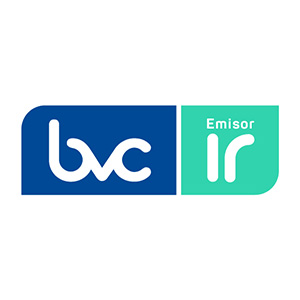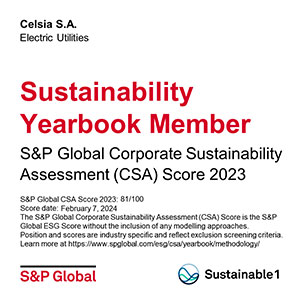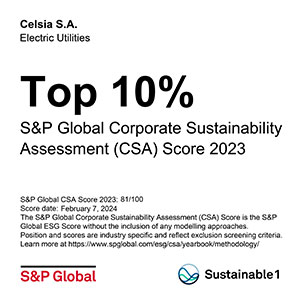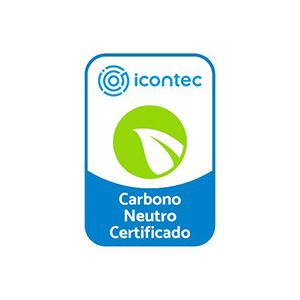We celebrate the natural wealth of our planet, actively caring for our biodiversity and ecosystems. Each species and habitat is a vital piece in the mosaic of life.
GRI (3-3) Our commitment is an integral part of the Environmental Policy approved by the Steering Committee at the meeting in May 2022. It incorporates action guidelines based on managing impacts on biodiversity from the principle of “mitigation hierarchy,” prioritizing actions for the prevention, reduction, mitigation and restoration of impact and managing the no net loss of biodiversity.
At Celsia, we go further, appropriating international standards In 2023, we joined the Taskforce on Nature-related Financial Disclosures (TNFD) forum, as part of the multidisciplinary advisory group organizations. At the same time, we made progress in adopting the framework to adequately disclose and manage risks, dependencies and impacts related to nature.
Our Management
GRI (3-3) (2-23) (2-24) (2-25) (2-29) At Celsia, we reflect our commitment to a better planet for all and recognize the planetary limits from an environmental dimension to the social and economic dimensions.
- We focus our efforts and management throughout project life cycle under the principle of mitigation hierarchy. Biodiversity is a material topic and is part of our analysis of risks, dependencies and opportunities in adopting the TNFD framework.
- We understand biodiversity and ecosystemic services synergistically, based on a direct relationship with the effects of climate change.
- We prioritize actions to prevent, reduce and mitigate impacts, implement restoration and compensation measures, and perform control actions with early identification of risks, environmental impact studies and environmental management plans, follow-up and monitoring.
- We believe cooperation and joint work enable conserving and restoring ecosystemic services and biodiversity.
- We publish information transparently and generate scientific and academic knowledge.
- We have goals for 2030 that generate net positive results on biodiversity.
- We comply with the guidelines of Performance Standard 6 (IFC), the Equator Principles, ISO 14001 standards, international standards GRI, DJSI, TCFD and TNFD, and we go further with our ecosystem restoration program ReverdeC.
How we Manage our Impacts
GRI (3-3) (2-23) (2-24) (2-25) (2-29) At Celsia, we build projects and operate energy generation, transmission and distribution assets. Therefore, our impacts are associated with changes in land use and ecosystem fragmentation.
Within our biodiversity management we characterize the flora and fauna through field studies with experts; map real and potential positive and negative impacts, and use tools, such as early risk assessment, environmental impact studies (EIS), management plans and compensation, to reduce, mitigate and manage them. We enhance positive impacts, document biodiversity and publish the results to generate knowledge.
We go beyond legal compliance by appropriating national and international standards and initiatives that guide our socio-environmental management, such as Performance Standard 6 (IFC), the Equator Principles, ISO 14001 standards and the TNFD framework.
We also have a Guide for the Protection and Conservation of Biodiversity and Ecosystemic Services and the Sustainable Management of Living Natural Resources,applied at each stage of the asset life cycle, with guidelines and practices for impact mitigation, continuous improvement, efficient use of natural resources and the consolidation of relationships of mutual respect with different social actors.
We have the Matrix of socio-environmental risks, aspects and impacts (RAISA, for the Spanish original) for each facility, and we update it annually.
At Celsia, we consider biodiversity as of the pre-feasibility stage of projects for decision-making, as part of our commitment not to advance projects and activities in protected areas of IUCN categories I-IV and world heritage areas (biosphere reserves, priority areas for the conservation of biodiversity; Ramsar sites, areas of importance for the conservation of birds (AICA´s for the Spanish original).
We guarantee participation and constant dialogue with communities, because we know they are key in preparing socio-environmental studies. This is the best way to understand ecosystemic services in the environments of our assets, generate a positive impact through the dissemination and knowledge of biodiversity data, and define conservation and sustainable use strategies in direct relation with SDG 15 and COP 15, within the framework of global actions in favor of nature by 2030.
We plant native and threatened species of flora according to IUCN category, supporting the natural formation of biological corridors for fauna in operating environments.
We ratify our commitment to net positive impact and contribute to the global fight against deforestation and the loss of biodiversity
Commitment and evaluation
Commitment to Biodiversity
The key elements of our commitment to biodiversity are:
Commitment to our Own Operations and the Supply Chain
During the life cycle of projects or assets in operation, we act under the principle of mitigation hierarchy and no net loss of biodiversity to prevent, minimize, reduce, mitigate impacts and implement restoration and offsetting measures. We concentrate our efforts on becoming a net positive company by 2030, reason why we carry out early risk analyses on biodiversity and give a greater development option to projects with minimal impact.
We are also making progress in adopting the TNFD framework through the LEAP methodology for the operational activities of power generation, transmission and distribution, which will be published in 2024.
Mitigation Hierarchy
- Prioritize impact prevention, minimization and restoration measures, and execute offsetting measures on residual impacts. These measurements are quantifiable and demonstrated in situ on an appropriate geographic scale.
- Address topics, such as biodiversity, exotic species and ecosystemic services, and execute actions that prevent the accidental or unintentional introduction of exotic species in training programs for employees, contractors and the community.
- Avoid significant alterations of natural or critical habitats in primary purchases that are part of our sustainable sourcing process.
- Make projects with a minimal impact on ecosystems, biodiversity and ecosystemic services more feasible.
Partners and Allies
- Academy and State Authorities Universidad EAN Bogotá, Universidad del Pacífico, Corporación Autónoma Regional del Valle del Cauca, Autoridad Nacional de Acuicultura y Pesca (AUNAP), Farallones de Cali National Natural Park.
- Expert Partners Corporación Paisajes Rurales, Tekia, Fundación Bioconservancy, Open Forest Protocol, Terrasos, USAID – Páramo and Forest Program, Chemilab, GAIA Ingeniería Ambiental, Kiweyu, Bioasesores de Colombia, Plyma, Podas and Jardines.
- Communities and Organizations Fundación ReveredeC, Fundación Puntos VerdeS, Fundación Ríos Tuluá y Morales, Community Council of Punta Soldado, and the National Water and Biodiversity Center of the ANDI.
No Net Loss of Biodiversity
No Net Loss of Biodiversity
GRI (3-3) By 2025, our goal of no net loss of biodiversity is for 100% of new projects and facilities in operation to have a risk assessment for biodiversity or biotic management plans.
100% of new projects and facilities in operation with risk assessment for biodiversity (P) or biotic management plans (O) to achieve no net loss of biodiversity by 2025
During 2023, 10 solar farms will come into operation in Colombia.
Currently, 37 of the hydraulic, thermal, wind and solar farm generation facilities in operation (O) in 2023 had at least one study or georeferenced monitoring on biodiversity and ecosystem services through the implementation of biotic management plans with no net loss of biodiversity and, where possible, net gain.
Parameters used to measure the impact on biodiversity and the extent of the commitment to biodiversity.
The tools and mechanisms used to measure our impact on biodiversity are:
- Early biodiversity risk assessments.
- Environmental Impact Assessments on biodiversity, EIAs.
- Environmental management plans on biodiversity.
- Monitoring and follow-up plans on biodiversity.
- Environmental Compliance Reports, ICAs.
- Compensation plans for biodiversity loss
- Guide to protection and conservation of biodiversity, ecosystem services and sustainable management of living natural resources.
No Net Loss of Biodiversity (NPN).
- Requirement of own operations.
- Tier 1 supplier requirement.
No Deforestation
At Celsia, we are committed to offsetting with future reforestation (not net deforestation).
At Celsia we have a commitment to compensate with future reforestation (not net deforestation)
- Requirement of own operations.
- Tier 1 supplier requirement.
- Compliance throughout the group with forestry regulations and/or mandatory standards.
- Commitment to suppliers and/or partners to manage and mitigate deforestation risks.
At Celsia, we have a sustainable sourcing process. All suppliers and companies linked to our company know and comply with the applicable socio-environmental requirements and must be committed to protecting the environment and relationships of mutual respect that generate social value, knowing and complying with the applicable national regulations and other national standards and regulations. Deforestation and acquiring timber from natural forests or protected species is prohibited.
Exposure and Assessment of Biodiversity
GRI (304-2) At Celsia, we evaluate and map operation sites. Today, we can determine the level of importance for biodiversity and the potential impacts our operations may have on different ecosystems.
Number and areas of sites evaluated
- Hydroelectric and thermal power generation plants, as well as wind farms and solar farms.
- 10 new solar farms installed in Colombia during 2023.
- 37 hydroelectric, wind, thermal and solar power plant installations. Of this total, 32 are evaluated and mapped in terms of biodiversity.
ReverdeC
PROPIO (C-RVDC1) We give life to ecological restoration projects through ReverdeC. Every tree planted and every ecosystem restored is a step towards a healthier world.
ReverdeC is a voluntary ecological restoration initiative born in 2016. It has now become Fundación ReverdeC, with the goal of planting 50 million trees by 2030.
As of 2023 Fundación ReverdeC, we will plant 3.3 million trees to restore 1,105 hectares in: Valle del Cauca (basins of the Riofrío, Garrapatas, RUT, Yotoco, Pescador and Amaime rivers), Tolima (basin of the Combeima river), Antioquia (basins of the Nare and Aburrá rivers), Atlántico (basin of the dam channel) and Risaralda (Otún River).
We contribute to the conservation and restoration of strategic ecosystems such as tropical dry forest, montane humid forest, high Andean forest, paramo and mangrove forest, with the strengthening of community nurseries in all the regions in which we are present and generate local employment for community-based organizations.

Figures 2023
Our accumulated figures to 2023
The ReverdeC Foundation, created in 2022, also faces the following challenges:
- Continue with the evaluation of new lines of action such as habitat banks and/or biodiversity credits and carbon credits, for the financial self-sustainability of the program and the generation of incentives for landowners and local stakeholders.
- Consolidate the Foundation as a platform for organizations and individuals to contribute to the planting of native trees and the restoration of strategic ecosystems in Colombia.
We consolidate the ReverdeC Foundation as a platform for the growth of the program in the country through the contributions of different business sectors and/or associations.
Main Results
GRI (3-3)
We are making progress in acquiring 325 hectares, in compliance with the environmental license and investment plan of 1% of the San Andrés hydroelectric plant, for the conservation of strategic ecosystems of the Páramo de Belmira in Antioquia, Colombia.
We participated in the consultation group and multisectoral activities that integrated the national position for adopting the official version of the TNDF framework led by the National Center for Water and Biodiversity (CNAB, for the Spanish original), ANDI, TNFD advisory group for Colombia.
We began adopting the TNFD framework for assets in operation.
We updated the socio-environmental procedure incorporating international standards and the management of biodiversity and ecosystemic services, with an application guide for each stage of the life cycle of the assets.
100% of generation and T&D assets have biodiversity assessments and mapping, based on environmental permits, Environmental Management Plans (EMP) and Environmental Impact Studies (EIS) and/or environmental licenses.
We conducted 69 biodiversity and ecosystem service monitoring activities at our operating assets and projects to determine the status of terrestrial and aquatic ecosystems at our operations and projects, through taxonomic determination and the application of bioindicators and ecological indices.
We planted 73,178 trees on 82.4 hectares in Antioquia, Córdoba, Tolima and Valle del Cauca within the offsetting plans for the loss of biodiversity. Some of the stocked species are classified in the following categories: critically endangered, endangered, vulnerable and of least concern by the IUCN.
We developed a variant to the Chinú-Tolú Viejo Line project route for protecting the dry forest ecosystem, which is the habitat of the red howler monkey (Alouatta seniculus).
We made progress in disclosing the company’s biodiversity studies in partnership with Sib Colombia and the Global Biodiversity Information Facility (GBIF).
Foundation Puntos Verde Lito, in partnership with Saving the Amazon, made us part of the dream of reaching one million trees for the Amazon rainforest, in recognition of our management of waste from electrical and electronic equipment through its program. By planting 83 native Amazonian tree species in the Puerto Vaupés Great indigenous reservation and the 13 de Junio Great indigenous reservation, in the department of Vaupés, Colombia, between 2022 and 2023, in collaboration with the community, we became members of the restoration and protection project for the Amazon. For three years, we will be able to monitor our trees through photographs that will be updated every six months, and view them with georeferencing.
In the southern area of the department of Tolima, we have a total of 13 electrical substations, in which we install wildlife protectors designed for transformer bushings. The main objective of this measure is to ensure the preservation of and care for wildlife, avoiding possible damage to animals that come into contact with electrical equipment.
Relevant Fact
#Today in our #TBT we remember all the biodiversity that surrounds our Alto and Bajo Anchicayá hydroelectric power plants
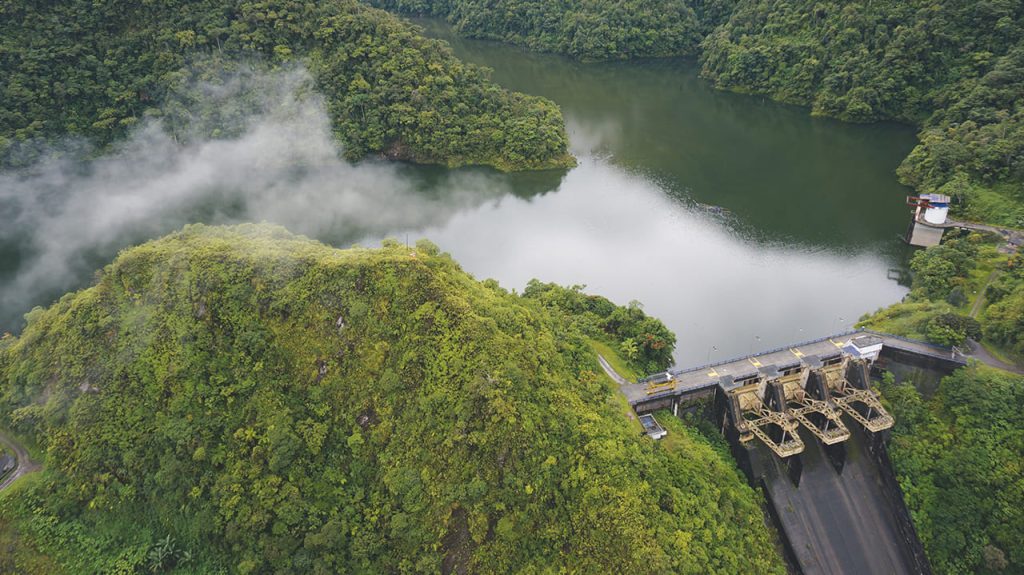
Relevant Facts
#Today in our #TBT we remember all the biodiversity that surrounds our Alto and Bajo Anchicayá hydroelectric power plants
By 2025
Celsia will be a company with no net loss of biodiversity.
Between 2025 and 2030
Celsia will perform efforts to be a company witha net positive impact.
By 2030
Celsia is committed to ensuring that the Reverdoles.eC Foundation plants 50 million trees
Topic / Indicator | Own indicators | CSA S&P Indicator | SASB indicator | GRI indicator | TCFD | External assurance |
|---|---|---|---|---|---|---|
Commitment and evaluation | – | 2.6.2, 2.6.3 | – | 304-3 | – | |
Number of trees planted and hectares intervened during the reported year | C-RVDC1 | – | – | – | – |
AUNAP: National Aquaculture and Fisheries Authority.
Electrical substations: An installation that is part of an electrical power system, whose main objective is to modify and establish the voltage levels of an electrical infrastructure to facilitate the transmission, distribution and final use of electricity.
Solar farms: Massive solar panel installations that generate clean energy for the electrical grid from photovoltaic solar energy.
Forest use: The extraction of products from a forest, from obtaining them to the moment of their transformation
Forest offsets: Measures to offset and repay communities, regions and, in general, the environment, for the impacts or effects of a project or activity on plant cover, which cannot be prevented, corrected or mitigated.
Characterization of fauna: A study that helps compare plant communities based on their richness of species and highlight aspects of their ecology.
Censuses: A quantitative and qualitative evaluation tool that accounts for tree species and their ecological importance.
Native species: Species that belong to a specific region or ecosystem.

